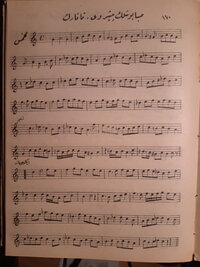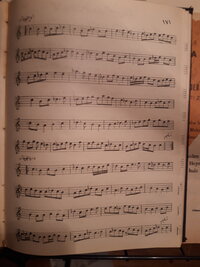- Mesajlar
- 30
- Tepki Puanı
- 64
This week's puzzle from the Şamlı Selim "Sazende" book is this peşrev: I believe it is Sababuselik, but who is the composer ?
I still can't read the Ottoman script, but doesn't it say "Tatarın" up there ?
But that would be strange since Gazi Giray Han lived two centuries before Dede Efendi, who invented Sababuselik ?
Or is it another name ? Or another makam ?
I would be very grateful if some of the esteemed experts on this forum could help shine some light on this.
Apologies for the bad pictures because of the bad light:
I still can't read the Ottoman script, but doesn't it say "Tatarın" up there ?
But that would be strange since Gazi Giray Han lived two centuries before Dede Efendi, who invented Sababuselik ?
Or is it another name ? Or another makam ?
I would be very grateful if some of the esteemed experts on this forum could help shine some light on this.
Apologies for the bad pictures because of the bad light:
Bütün Ekli Dosyaları İndir
-
924.4 KB Görünüm: 264
-
747.1 KB Görünüm: 266


